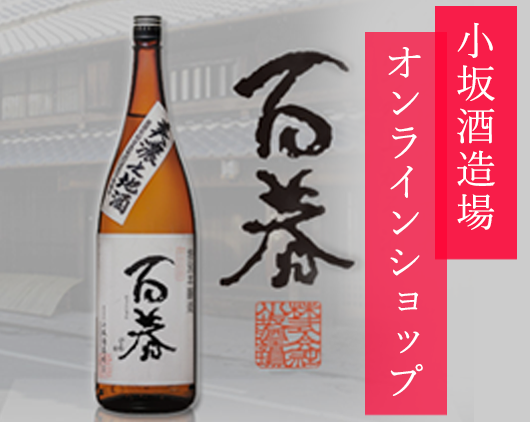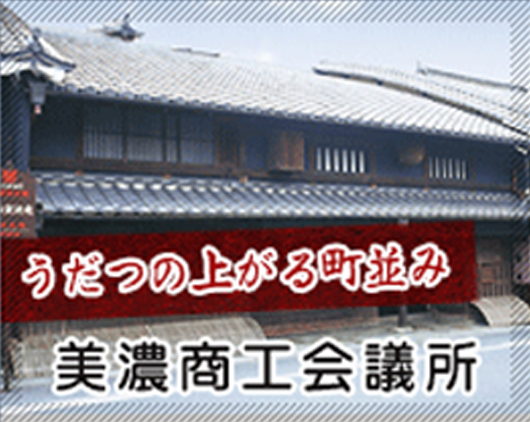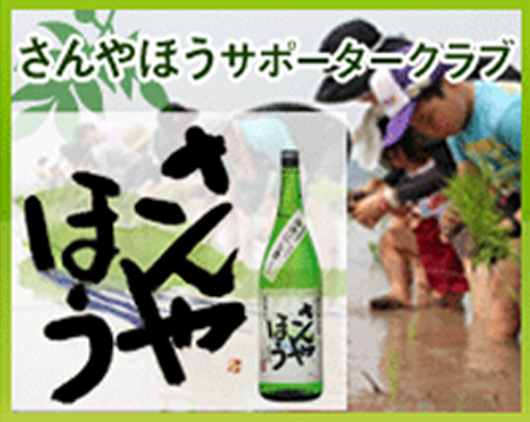The Process of Producing SANYAHO
Using SANYAHO as an example, here is an explanation of the process of sake production
1. Rice polishing
Minonishiki, chemical-free rice, is polished to 60 %.
40% is rice bran (nuka) and not used in sake production. This is because the outer layer of rice has a component that creates a bitter flavor.
Nuka is used as a food ingredient for rice crackers, mirin (sweet sake used as seasoning) and other products.
2. Steeping
In the sake production process, rice is steeped in water before steaming, just as rice is steeped in water before it is cooked.
3. Steaming
Then the Minonishiki rice is steamed. Nowadays, the rice is steamed with dry steam.
Rice in the Koshiki (steaming vat) is flattened so it becomes even.
4. Making Koji
Koji is made with Koji kin (aspergillus oryzae mold). In a room with temperature set at 30℃, this process takes about 44 hours. As the Koji kin is alive, it works during the night as well.
It is very important to note that if corners are cut in this process, good sake cannot be achieved.
5. Yeast starter
Mashing is initially done in a small batch, keeping the temperature at about 20℃. Shikomi (mashing) means to add koji, steamed rice and water to a tank.
For the Shubo, a microorganism called yeast that cannot be seen by the naked eye is also added.
Shubo means the base of the sake. Its purpose is to cultivate yeast. In about 2 weeks, a sweet and sour nigorizake (unrefined sake) is created.
6. Mashing in stages over several days
If large quantities of raw materials are mashed, the yeast will become weak. Therefore, mashing is separated into 3 stages over 4 days. The ideal temperatures for the 3 stages are 12℃, 9℃, and 8℃ respectively. However, the second day is a rest day called ‘‘odori’’. It sounds like a child’s long holiday just after entering elementary school. Yeast is increased gradually as it freely grows in the warm environment (temperature). The amount to mash is roughly doubled on day 1, day 3 and day 4, with finally 828 kg of Minonishiki rice added to the tank.
7. Fermentation
Yeast uses the enzymes in the koji and converts the steamed rice into sugar. Then the yeast consumes the sugar and produces alcohol and carbon dioxide.
In the tank, this process continues over and over. The white cloudy liquid at this stage is called Moromi.
The temperature rises to 15℃ and higher on its own but we control it so it does not go any higher (for wine, shochu and whiskey the temperature rises to about 30℃).
With SANYAHO, in about 20 days, a liquid with 18% alcohol is created.
8. Pressing
Once fermentation is completed, next is pressing.
After placing the moromi into the pressing machine, the moromi separates into sake and sake kasu (remaining lees).
Freshly pressed sake still contains carbon gas, so you can enjoy a slightly tingling sensation and flavor.
If bottled at this stage, the sake is called Nama Genshu (raw undiluted sake).
About 1200 liters of sake are pressed.
9. Pasteurization
SANYAHO that is not bottled as pure (undiluted) sake is sterilized by heat (hi-ire) to prevent the growth of unwanted bacteria.
10. Storage
Then the sake is quietly stored until maturity.
11. Filtration
The sake is filtered to adjust the ori (sediments) and distinct aroma.
12. Bottling
Now the sake is bottled, labeled and ready for shipping.
When bottling the sake, hi-ire (sterilization by heat) is done one more time.





